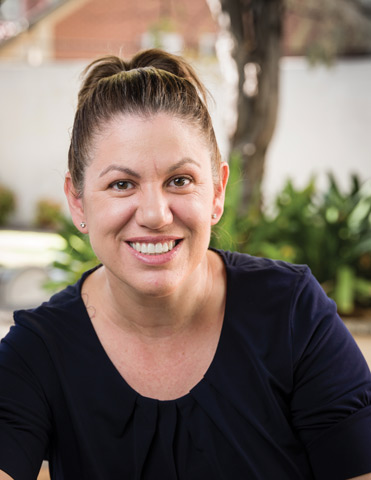Researchers working on the Developmental Pathways Project being undertaken by The Kids’ Linked Analytics and Social Policy Team are determined to find out what makes families vulnerable to child abuse and neglect, and do something about it.
As a trained psychologist working with struggling families, Dr Melissa O’Donnell saw first-hand the urgent need to deal with child abuse and neglect as a public health issue: to find avenues for prevention, early support and intervention that refocused efforts on keeping children safe and providing much-needed assistance prior to abuse and neglect.
The insight she gained at the coalface fuelled her determination to step up, join The Kids Research Institute Australia’s Linked Analytics and Social Policy research team, and play a key part in pinpointing the primary factors that made families vulnerable to child abuse and neglect. Such knowledge would then aid services in designing and targeting effective strategies and programs.
“I felt there was a real need to look at what contributed to risk,” Dr O’Donnell said. “And if I could help identify that and support policy and programs that really did prevent child abuse before it occurred, or intervened early to support those families, then it would create a better system for the families themselves.”
After working for ten years to analyse 20 years of de-identified linked data from the WA Department for Child Protection and Family Support and the WA Department of Health relating to 524,534 children, she has done just that.
Her team’s research findings, based on the longitudinal population data, have provided evidence highlighting the most pressing areas where services need to work to support families prior to abuse and neglect.
Dr O’Donnell found that children with disabilities are three times more likely to be maltreated compared to other children, but that risk varies by type of disability.
And regardless of the cause, the disability types most strongly associated with maltreatment often co-occurred with a number of other risk factors, such as parents who are young or who have been hospitalised for mental health issues, and living in more disadvantaged neighbourhoods.
“These families already face additional stressors and have fewer resources to access services for their children’s special needs,” said Dr O’Donnell, a University of WA Fellow.
The findings have been used by the WA Department for Child Protection and Family Support to redesign services and formulate its recently released Building Safe and Strong Families: Earlier intervention and family support strategy. Aimed at diverting families from entering the child protection system, this strategy widens the Department’s primary focus of assessment and substantiation.
“We have also used them to do more training with child protection workers and we fed the information back into the Royal Commission investigating children with a disability who were abused,” said Dr O’Donnell.
“And as a result of our research, we successfully lobbied to get changes made so that the National Child Protection Framework has now taken a public health approach to child abuse.”
With the project funded by the National Health and Medical Research Council and the Australian Research Council, the linked de-identified records that Dr O’Donnell’s team examined included Birth Registrations, the Midwives Notification System, Mental Health Register, Hospital Morbidity Database, Mortality Database, WA Register of Developmental Anomalies, the Intellectual Disability Exploring Answers database and the Department of Child Protection and Family Support data.
“So we were able to look at parental mental health and the factors associated, children with disability and their risk, and substance use in families – such as mothers with a child born with neonatal withdrawal syndrome,” Dr O’Donnell said.
“Often these families are the hardest to research as they are reluctant to discuss child protection issues, substance use or mental health issues. So by using the linked de-identified data, we have been able to investigate and determine issues relating to risk while still protecting the privacy of families.”
Dr O’Donnell says the findings have placed further emphasis on the need to take a whole-of-government approach, as well as the need to ensure that parents facing challenges and adversity have the appropriate services and support structures in place to enable their children to achieve their full potential and ensure their wellbeing.
“It’s about all government agencies supporting families,” she said. “And I think Treasury has become much more aware of the need to invest funds early on, because there has been a large rise in the number of children and families being investigated.”
What’s next?
Investigate the reasons for the recent rise in newborn and infant removal from families. Evidence found will be used to improve support and safety plans for high-risk families and to ensure support services are meeting the families’ needs.
Cost of removing a child from its family
- Child
Distress of separation from family, being in multiple placements and having limited support once they leave care. - Family
Trauma of child removal, for Aboriginal families exacerbates inter-generational trauma from a history of the Stolen Generation.
